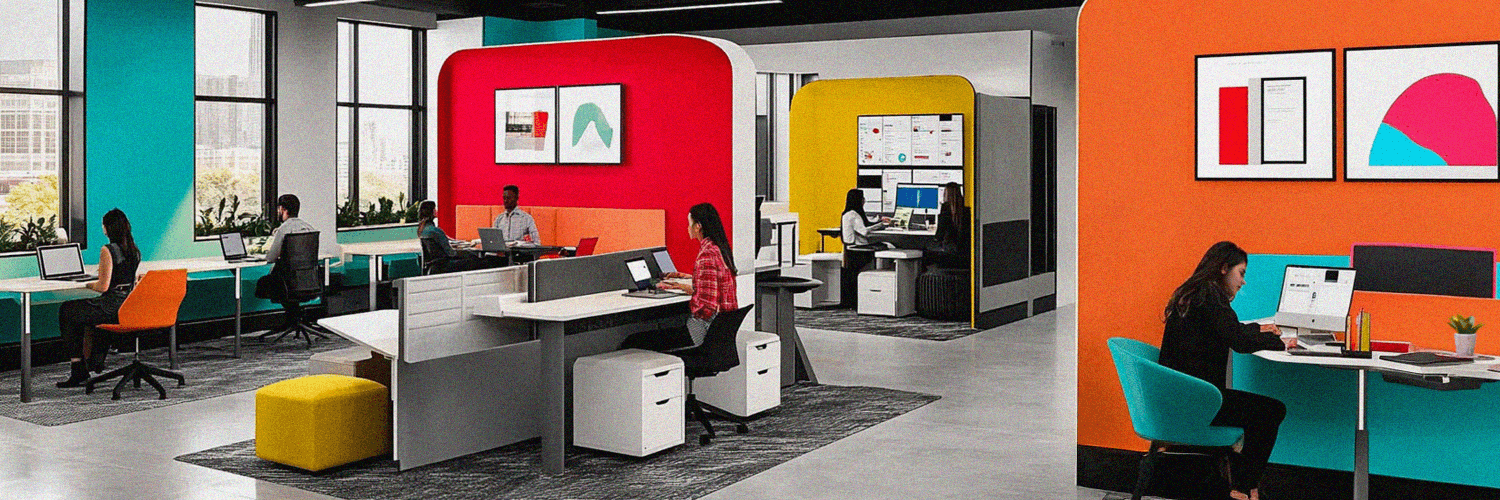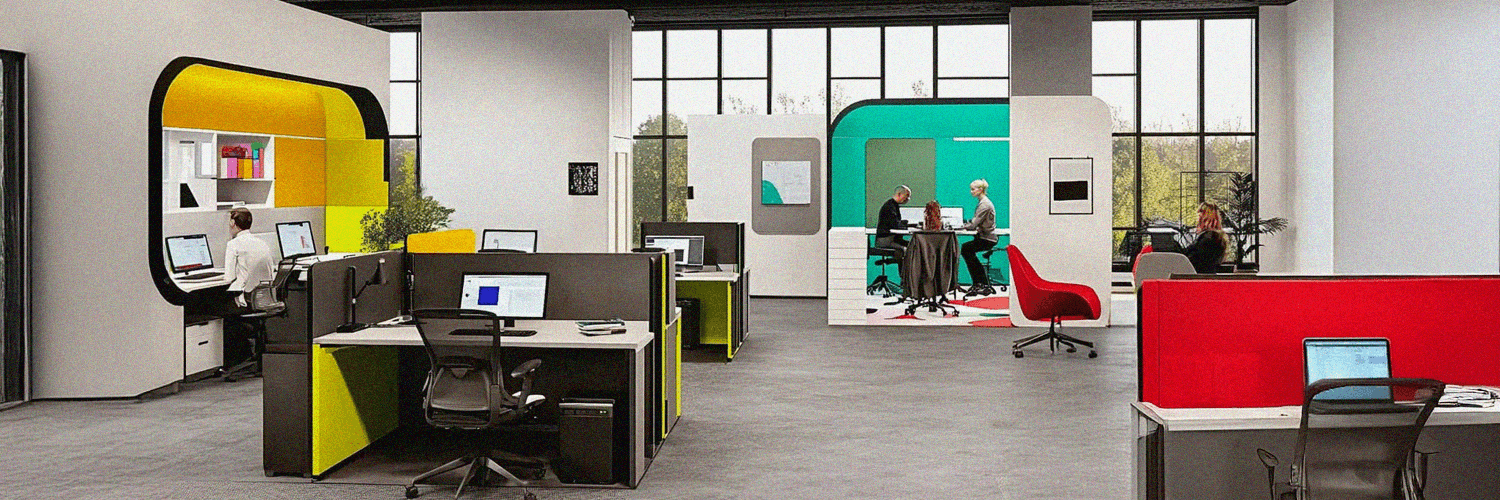As a property manager, if you want to be best equipped to cope with the host of unknowns you’re facing – economic uncertainty and macroeconomic dynamics, hard-to-predict shifts in preferences coming from office tenants – and with the new, more dynamic ways of working, one thing’s for sure:
The traditional office leasing model no longer suits businesses’ rising needs for agility and flexibility.
Nor their overall need for office space square footage.
Research shows that by 2030 demand for office space will be 20% lower than it was in 2019 (and that’s the optimistic scenario).
So…
What can you offer office occupiers to fulfill their needs for more agility and flexibility?
Shorter lease terms AND more flexible, highly customizable office spaces.
Now that you have your short answer, let’s dive into more details about the best strategy to adopt to stay competitive in the evolving office market.
TL;DR:
- Uncertainties in future office needs, employee attendance, growth, and economic landscape are driving a reevaluation of leasing strategies.
- Shorter commitments align with flexible work arrangements and evolving operational needs.
- Uncertainties in future office needs and evolving work environments drive a shift away from long-term leases.
- Companies seek flexibility and customization in office portfolios for cost optimization and adapting to evolving attendance patterns.
- Advanced technology, smart building systems, and workplace optimization software play a key role in attracting tenants.
- Adapting to demands for agility and customization will be key for property managers to thrive in this evolving market.
Changing Dynamics in the Workplace
Let’s try a little empathy exercise:
You’re a business owner faced with a wide range of uncertainties and unknowns:
- You’re uncertain about your future office space needs
- You’re uncertain about how long your employees will keep coming to the physical office
- You’re uncertain of your company’s future growth
- You’re uncertain of the economic landscape
- You’re striving to keep up with a far more dynamic work environment
Given these challenges, you’re forced to reevaluate your office needs and reconsider your leasing strategy.
Committing yourself to a long-term lease simply does not suit your need to cope with all these uncertainties.
As you need to be quick to react and to adapt to the unknown AND your employees’ rising demands for flexi work.
In short, you look for more agile office solutions.
.png?width=928&height=523&name=Blog%20posts%20photo%20(11).png)
Shorter Lease Commitments: A Shift in Approach
Office attendance is at 30% below pre-pandemic levels, research shows.
With employees coming to the office less often – thanks to the various forms of flexible work arrangements that companies have adopted – AND the overall macroeconomic uncertainty, shorter leases are growing into a trend in the office sector.
Caution and hesitation when it comes to long-term office space commitments + a rapidly changing and unpredictable market + companies’ ever-evolving operational requirements = a steady preference for shorter office lease commitments.
And even though office attendance has somehow stabilized, office tenants are still hesitant to commit to long-term leases.
As they're uncertain of their future office space needs.
And this is a reality that you – the facility manager or building manager – need to recognize, understand, and… adapt to.
Emphasis on Flexibility and Customization
Another noticeable trend that facility managers need to plan for is companies’ increased demands for flexibility and customization in their office portfolios.
CBRE reports that 39% of the surveyed companies are interested in additional ways to optimize their costs and better adapt them to their evolving office attendance patterns.
To the fluctuating workforce needs.
One such way of optimizing their costs is lowering their rent until their office attendance threshold is reached.
The same survey shows that 34% of companies expect to have access to built-out (and pre-furnished) office space that they can quickly occupy as their needs for office space increase.
In other words, it’s expected that companies will base their site and occupancy decisions on the level of flexibility that landlords will be willing to provide them with.
And on the level of space customization.
They’ll continue to look for office space that is adaptable and flexible so they can accommodate their hybrid workforce’s evolving needs for:
- focused work
- collaboration
- team meetings
- innovation
- learning
With the hybrid office turning more and more into a value and culture space, while also being the space where teams meet regularly to collaborate, brainstorm, and get work done, companies are looking for a wider range of office space customization options.
For adaptable office designs that respond to their employees’ evolving needs AND help them make the most of their rented space.
And landlords and property managers are responding to this increasing emphasis on flexibility and office space customization by:
- offering their tenants more versatile lease terms
- providing them with more space customization options
Integration of Technology and Amenities
More than half of companies expect to be granted access to shared amenities – meeting space, wellness facilities, communal areas – in the office spaces they occupy. According to the same CBRE research.
While 32% are relocating to better-quality office spaces.
This “flight to quality” is another trend that will challenge the already competitive office leasing landscape.
And advanced technology plays a key role in responding to office space tenants’ increasing demand for better quality.
State-of-art communication infrastructures, smart building systems, workplace optimization and space planning software, and, overall, technology that promotes flexibility become a key differentiator in attracting and retaining tenants.
And there are 4 good reasons for this “flight to quality” that we’re seeing in the office sector:
- Employers see high-quality office spaces as a way to increase their office attendance rate
- Better quality of the workplace is also perceived, by the employees, as proof that the companies they work for are serious about investing in their people. And in their performance. Which leads to better employee engagement and commitment to increasing their performance
- Class B and C office buildings are often unadapted to hybrid work
- With companies shrinking down their office footprint and along with that their costs, too, they can spend on smaller, but higher-quality office space
%20(1).png?width=928&height=523&name=Blog%20post%20photos%202%20(2)%20(1).png)
Integrated Smart Space Management Software to Save on Costs
… And to maximize office efficiency.
With less square footage to use and constantly evolving office attendance patterns, companies are facing the challenge of efficiently managing their downsized office space.
This is where landlords offering them office spaces with workplace management software incorporated can differentiate themselves in the… quest for attracting and retaining tenants.
How exactly can a company save using such software? And how much?
Let’s take a dive into a real case study example: the ASSEE Group – an important IT company selling its own software solutions and services – using the YAROOMS Workplace Experience Platform for daily office space booking.
The challenge(s) they were struggling with?
- Scheduling hybrid work and booking space in a recently downsized office space
- Tracking and logging employees’ presence in the physical office
Soon they realized that manual planning, dependent on Excel sheets, wouldn’t cut it in a hybrid work environment.
How has a solution like YAROOMS helped them overcome these challenges?
- It has taken the burden of keeping track of people’s presence in the office off their backs: no more collecting information from Excel tables and building entrance gate logs
- It has given ASEE employees the autonomy to book office space and plan their days at the office themselves with just a few simple clicks
- It integrates with Microsoft Teams, the workplace communication tool they were already using
- It provides their management teams with the needed real-time presence and utilization data
- It has helped them retrieve time otherwise lost on manual planning and reporting AND save approximately €200k a year from downsizing and adopting a hybrid work model. And sustaining this work model by using YAROOMS to efficiently manage their downsized office space.
Curious to see how YAROOMS Workplace Experience Platform could help your company? Check out this short 3-minute demo!
In short, making the most of their downsized office space – with not enough desks for each employee – in the context of a hybrid work environment is the biggest challenge that companies are dealing with these days.
And integrating smart workplace management technologies are property managers’ solution to attracting these companies. And to retain them as tenants.
Integrated Technology Solutions to Improve Energy Efficiency
Class A office buildings have outperformed class B and C ones, compared to the 4th quarter of 2019, research shows.
To give you just an example, growth in class A occupied office space has grown by approximately 22% in South Carolina and Charleston between Q4 2019 and Q1 2023.
And there are 2 main drivers for this increased demand for office space that has energy-efficient technology incorporated, as companies:
- are seeking to be net-positive for the environment
- are seeking to minimize their operational costs, which smart technologies can help.
In sum, from stronger LED lighting to smart sensors to vertical gardens and green roofs, to solar panels and green thermostats, facility managers are expected to implement energy-preserving and automation technologies to capitalize on this trend.
Summing It Up: A Paradigm Shift in Office Leasing
Shorter lease commitments and increased flexibility.
These are the 2 rising demands coming from companies that will continue to (re)shape the office real estate sector.
And this paradigm shift only comes to reflect the evolving nature of work itself. And of the modern workplace, as a consequence.
Companies want more agile office solutions. And office leasing will continue to adapt to this need.
Though this shift is certain to challenge office markets, property managers who recognize and meet these demands for agility and customization will manage to stand out.
And to thrive in this ever-evolving market.












